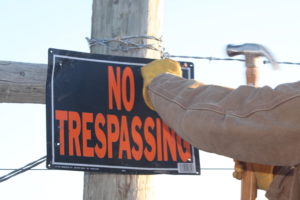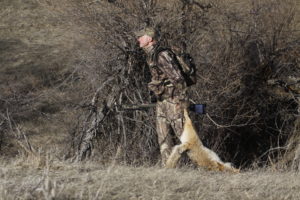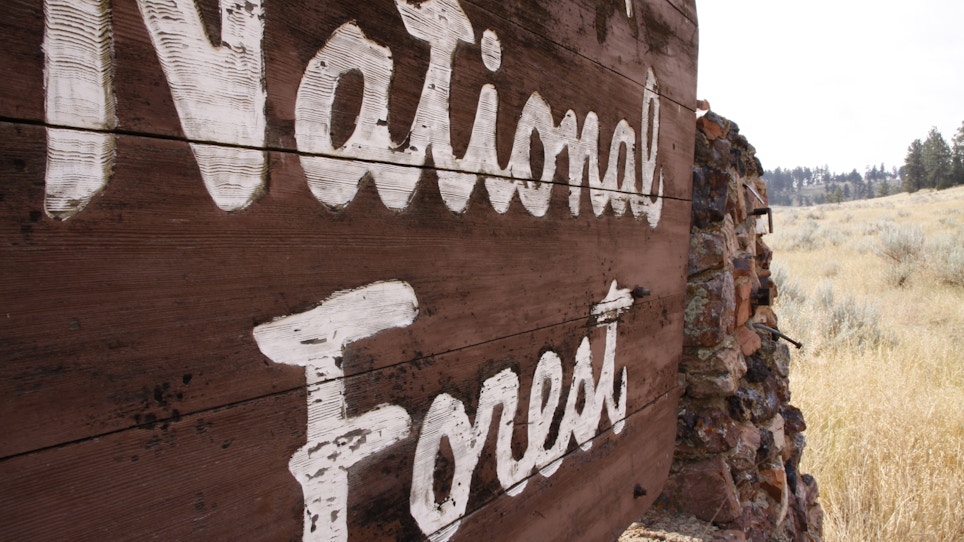Few will debate that hunting is expensive these days. It’s hard to find a super-saver deal on hunting whether it’s whitetails, elk, waterfowl or upland game. When you add in license expenses, lease expenses, possible outfitting fees, travel to remote locations and specialized gear you may have to take out a second mortgage just to go hunting.
There is one deal yet in hunting.
It may not offer the table fare associated with the successful outcome of a Rocky Mountain elk hunt, but it provides top-notch excitement with the challenge of hunting a savvy quarry. What is it? You guessed it. It’s predator hunting, but specifically coyotes.
Here are the reasons why it’s the best deal of the century.

With millions of acres of public land in the United States you won't run into these "No Trespassing" signs. (Photo: Mark Kayser)
Hunt Everywhere
Thanks to the prolific nature of coyotes, you can find them from border to border and coast to coast. Coyotes have expanded their range from the central corridor of North America to points east, west, north and south. This expansion began in the late 1800s, but increased throughout the 1900s due to a variety of reasons, including human manipulation of the environment for agriculture production. The removal of wolves from many regions also aided coyotes in their move due to less competition.
Today, predator hunters have opportunities to hunt coyotes in Oregon, Kansas or Florida. Tactics are similar, with slight tweaks depending on the terrain, but you can call a coyote with a cottontail distress call coast to coast.
You can also add in other species to your hunt depending on rules and regulations. Some states allow you to hunt fox, feral hogs and even varmints like woodchucks, or prairie dogs. Add all of this together and the action has no boundaries. It’s great hunting from dusk to dawn and in some instances you can hunt after dark depending on state regulations to expand opportunities.

Inexpensive licenses and ample land to hunt if you look for it, can yield great predator hunting year-round throughout the country. (Photo: Mark Kayser)
Low-Cost Licenses
So what does all of this theme-park-style-fun set you back? Costs vary, but in general it’s WAY cheaper than applying for a nonresident big game permit anywhere across the nation. Whereas a nonresident big game permit may set you back $300 or more, and small game generally exceeds $200; you can get in the coyote game for $100 and likely less.
Nonresident fees for states range from $40 in South Dakota, $97.50 in Kansas and, of course, in California where they charge you a tad more for everything, it’s $169.05 for a nonresident permit although you can get by for less than $50 on a two-day permit. Then there’s the opposite side of the spectrum where it is virtually free, like in the states of Wyoming or Montana. The only charge you incur in Montana is an extra $10 if you want to hunt state land.
Most states appreciate the help hunters add to the management goals of coyotes. As more and more studies emerge regarding the impact coyotes have on wildlife populations, the extra help doesn’t hurt.
Easily Opened Gates
A big bonus that equals the low price of coyote hunting is the fact that many landowners still allow access for predator pursuits. Have you tried to get on private ground for whitetail hunting lately? Have you tried to knock on doors to hunt pheasants? The good old days of stopping by and asking for permission to hunt are disappearing like donuts in the office breakroom.
Fortunately, coyotes and other varmints don’t garner the same status as big game, waterfowl and upland game. Few lease up land to hunt coyotes and although a handful of outfitters sell predator hunts, it’s not as commercialized as big game or small game hunts.
Livestock producers appreciate the removal of coyotes as do some wildlife land managers. The gates may not be wide open for coyote opportunities, but they certainly are swinging more than those gates that protect other game species.
Plenty of Public Land
Finally, if you can’t find an open gate on deeded land, you still have opportunities on public domain. Coyotes thrive on private and public land. They don’t care what side of the fence the mice or roadkill resides. Fortunately, big and small public parcels can be found almost anywhere. You shouldn’t overlook either. Big parcels give you plenty of space to roam, especially out West, but a small parcel anywhere could hold a coyote or sit adjacent to land where you have potential to call a coyote to you.
The Federal Government owns nearly 650 million acres of land, almost 30 percent of the land area of the United States. Federally-owned and managed public lands include Bureau of Land Management, National Forests and National Wildlife Refuges, plus others. These are lands that are held for all American hunters. The National Forest Service manages 193 million acres of land throughout the United States including forests and grasslands. The BLM has authority over 270 million acres.
So there you go. Debate that! Coyote hunting is the hunting deal of the century and opportunity awaits you just down the road.






